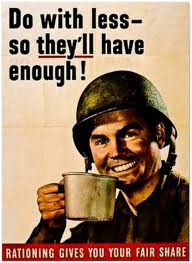World War II Overview
SS5H6 The student will explain the reasons for America’s involvement in World War II.
a. Describe Germany’s aggression in Europe and Japanese aggression in Asia.
b. Describe major events in the war in both Europe and the Pacific; include Pearl Harbor, Iwo Jima, D-Day, VE and VJ Days, and the Holocaust.
c. Discuss President Truman’s decision to drop the atomic bombs on Hiroshima and Nagasaki.
d. Identify Roosevelt, Stalin, Churchill, Hirohito, Truman, Mussolini, and Hitler.
e. Describe the effects of rationing and the changing role of women and African-Americans; include "Rosie the Riveter" and the Tuskegee Airmen.
f. Explain the U.S. role in the formation of the United Nations.
a. Describe Germany’s aggression in Europe and Japanese aggression in Asia.
b. Describe major events in the war in both Europe and the Pacific; include Pearl Harbor, Iwo Jima, D-Day, VE and VJ Days, and the Holocaust.
c. Discuss President Truman’s decision to drop the atomic bombs on Hiroshima and Nagasaki.
d. Identify Roosevelt, Stalin, Churchill, Hirohito, Truman, Mussolini, and Hitler.
e. Describe the effects of rationing and the changing role of women and African-Americans; include "Rosie the Riveter" and the Tuskegee Airmen.
f. Explain the U.S. role in the formation of the United Nations.
World War II ResourcesHere are a few great links to some World War II resources that are much better than I could create with my limited tech skills:
World Wide AggressionWorld War II was started because of aggression by various countries. In Europe Germany took over many countries with some assistance from a few other countries. Click here to see a fantastic map that shows what happened in each country during World War II.
On the other side of the world, Japan was showing similar aggression as they attacked Korea, China the Philippines and numerous pacific islands. They're plan was to take control of Asia and the Pacific while Germany planned to take over Europe. On the Home FrontMany Americans are surprised when they learned that the United States put thousands of Japanese Americans into internment camps during World War II. The government was afraid they would fight against the U.S. or help their former country in some way. As a result they put them into internment camps which were basically large prison camps. They should NOT be confused with concentration camps in Europe (concentration camps were basically death camps). The video below takes a closer look at the Japanese American internment camps.
|
Rationing
World War II, similar to World War I brought about rationing of many common items. The idea was to make sure that there was plenty of supplies for the war effort. In addition, many factories began producing only war supplies and thousands of men went off to fight in the war. These changes meant that less products could be made and farms produced less food. As a result rationing limited everything from gasoline and tires to various food products. You can learn all about WWII rationing here.
Additional Links: BBC's Interactive Rationing Page for Kids |
